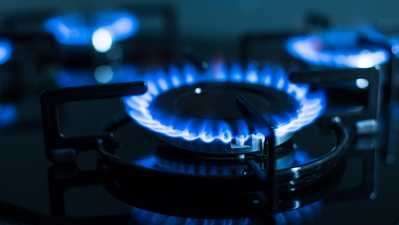| Home | About | Archives | RSS Feed |

The Retired Investor: Natural Gas Prices Fall But For How Long?
 |
Only recently have investors' focus shifted from $120 a barrel of oil to the soaring price of natural gas. Given the many uses of natural gas, from heating and cooling and generating electricity to the production of plastics and petrochemicals, the direction of prices could be critical to our economic well-being.
On Wednesday, June 8, 2022, natural gas prices fell over 10 percent after a fire at a Texas liquified natural gas (LNG) export terminal shut down the Freeport LNG facility for at least three weeks. The terminal accounts for 16 percent of U.S. export capacity. Gas prices fell because for a brief time, that gas will flow into the domestic market depressing prices in the short term.
Thus far in 2022, Henry Hub natural gas futures are trading at $8.23 Metric Million British Thermal Unit (MMBtu) down from $9.44 MMBTU but still up 10 percent, which is a fourteen-year high. Many analysts believe the present price rise is unsustainable, but summer heat, export demand, and a robust hurricane season may continue to pressure prices higher.
The Federal Energy Regulatory Commission (FERC) estimated that U.S. demand for natural gas would outpace supply this summer. FERC expects that U.S. demand for natural gas production will increase by 3.4 percent over the summer, compared to a projected 4.8 percent increase in consumption during that same period.
Overall, a drop in the U.S. supply of natural gas in storage is driving the price gains and the prospect for storage gains is dismal at best. How did the U.S. end up in this predicament? Blame the pandemic or regulation or both. There was a large decline in production in 2020, when extraction of gas, oil and most fossil fuels fell off a cliff. Many small gas producers went out of business during that period, while larger companies trailed off production to protect profit margins. Government regulations did their part as well. Wall Street bankers also wanted more dividends and stock buybacks and less production from the gas companies that survived the downturn.
As supply dwindled, demand for U.S. exports of liquefied natural gas (LNG) continued to increase to record levels. This year (2022), the U.S. has become the world's largest exporter of LNG. However, the majority of the world's LNG supply is sold under contract. Many of these contracts are decades long. As a result, most of the U.S. LNG supply is already spoken for. No one counted on the Ukraine War.
As Russia invaded Ukraine, the price of natural gas in Europe exploded higher. Traders initially thought Europe's price hikes would have an impact on this side of the pond. But over time, higher European prices had only a minor impact on the price of natural gas here in North America. As gas markets go, the U.S. is an isolated market. The U.S. natural gas market produces 97 billion cubic feet per day (BCFD) of natural gas, which is just enough for domestic consumption with another 12 BCFD available for LNG exports.
However, President Joe Biden has since promised to supply more natural gas to Europe to replace Russian fossil fuels. The problem with this pledge is that no one knows where the additional supplies are going to come from. There is little LNG available and even if there were it is extremely difficult to re-route LNG from one region to another.
One might think that with rising prices, why not simply increase production? That is easier said than done. Labor and material shortages, in addition to a more cautious approach to drilling (as a result of finance and regulation), have conspired to bring on some production, but at a much slower rate. In February 2022, monthly production hit 115.2 BCFD, but that was down from 118.7 BCFD in December 2021. Since then we have seen a steady decline. Average gas production output in the lower 48 states fell to 94.7 BCFD in June 2022 from 95.1 BCFD in May 2022.
As a result, storage levels are 18 percent lower than last year, and 16 percent lower than the five-year average. The way gas storage works, some storage historically is left unused in preparation for the winter when more gas is normally consumed. That is not happening this year. And all the above supply constraints could be exasperated by climate change.
The National Weather Service is already warning of another summer season of record-breaking heat waves in the Southern states. That wave has already commenced in places like Texas, Oklahoma and Louisiana. The nation's utilities, which are charged with supplying the electricity necessary to run all those air conditioners, have switched in times past to coal for power, but coal is now even more expensive than gas.
We have not even spoken about this year's hurricane season (June 1 to November 30, 2022). Historically, major hurricanes have disrupted both oil and gas production, refining, and delivery in many areas of the U.S. NOAA's Climate Prediction Center (a division of the National Weather Service), is predicting above-average activity this year with between 14 to 21 named storms on the horizon.
At the very least, I would suspect that down the road we will all be paying higher utility bills. As utilities grapple with higher natural gas costs, it will take some time to pass the costs through to the consumers. Depending on how tropical the summer gets, those higher monthly bills could persist well into the winter.
Bill Schmick is the founding partner of Onota Partners, Inc., in the Berkshires. His forecasts and opinions are purely his own and do not necessarily represent the views of Onota Partners Inc. (OPI). None of his commentary is or should be considered investment advice. Direct your inquiries to Bill at 1-413-347-2401 or email him at bill@schmicksretiredinvestor.com.

